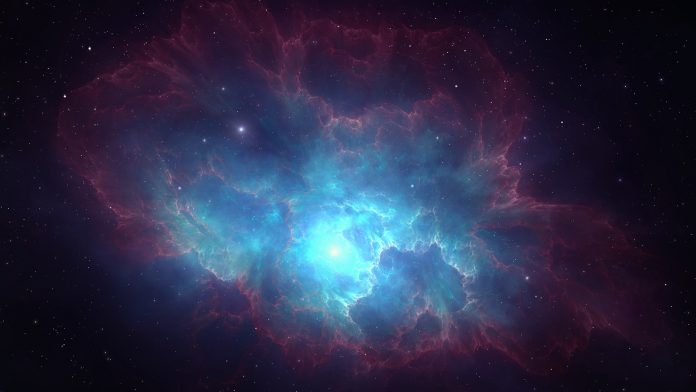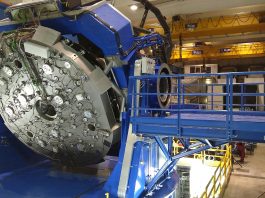Using the NOEMA radio telescope array and a cosmic water cloud, researchers have revealed the temperature of the early Universe.
An international collaboration of researchers has found a novel method for determining the temperature of the cosmic microwave background less than a billion years after the Big Bang.
Cosmic water cloud leads to revelation
Utilising IRAM’s NOEMA radio telescope array, the team used a cloud of water vapour to uncover the state of the Universe at this incredibly early stage in its history. This exciting discovery reinforces the theory that the Universe cooled incredibly quickly and opens up new possibilities for the study of dark energy.
The team’s results have been published in the journal Nature.
The temperature of the cosmic microwave background radiation – a relic of the energy released by the Big Bang – has for the first time been determined at an early stage in the history of the Universe, just 880 million years after it was first created.
NOEMA
The researchers’ incredible findings were attained by an international team of astrophysicists who employed NOEMA to examine a massive starburst galaxy, HFLS3, which was active at that time in cosmic history.
NOEMA is the most powerful radio telescope array in the Northern Hemisphere. It is situated in the French Alps and managed by the Institut de Radioastronomie Millimétrique (IRAM), which was established in 1979 by the CNRS and the Max-Planck-Gesellschaft (MPG, Germany). The Instituto Geográfico Nacional (IGN, Spain) then joined as a third partner in 1990.
Cosmic background radiation
They found that a cloud of cold water vapour in HFLS3 was casting a shadow on the cosmic background radiation. This shadow occurred as a result of the fact that the water vapour absorbs the warmer radiation from the cosmic microwave background as it moves closer to Earth: its degree of darkening highlights the temperature difference.
As the temperature of the water can be observed from other properties, this difference suggests that the temperature of the remnant radiation from the Big Bang at the time was approximately seven times higher than in today’s Universe.
The standard cosmological model hypothesises that the Universe has been cooling ever since the conception of the Universe. However, until now, this cooling has only been clearly established for comparatively recent periods in cosmic history.
A cooling Universe
Today’s Universe is absorbed in cosmic background radiation with a temperature of 2.7 Kelvin (K) (-270.45 °C), while less than a billion years after the Big Bang its temperature was roughly 20K (-253.1 °C). All the matter in the Universe would have been subjected to it, indicating that processes like the evolution of galaxies was once incredibly different to those taking place today.
The team’s results may also have significant consequences for the nature of the elusive dark energy. Astrophysicists have theorised that dark energy initiated the enhanced expansion of the Universe over the past few billion years, while its properties are still not understood as it cannot be examined directly.
Understanding dark matter
However, they do impact the fluctuating rate of cosmic expansion, and consequently the rate at which the Universe is cooling. By precisely determining the temperature of the cosmic microwave background throughout the history of the Universe and assessing the results achieved with the predictions of the Big Bang model, it should be possible for scientists to ascertain and inhibit the effects of dark energy.
Going forward, the international group plans to utilise this innovative technique to investigate other clouds of cold water vapour in distant galaxies to attain a better understanding of the cooling of the Universe throughout its history, thus continuing to unravel the early history of the Cosmos and advance our understanding of dark energy.









